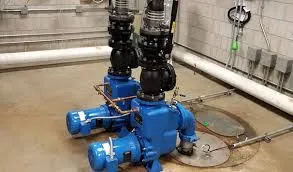Czech
- Afrikaans
- Albanian
- Amharic
- Arabic
- Armenian
- Azerbaijani
- Basque
- Belarusian
- Bengali
- Bosnian
- Bulgarian
- Catalan
- Cebuano
- Corsican
- Croatian
- Czech
- Danish
- Dutch
- English
- Esperanto
- Estonian
- Finnish
- French
- Frisian
- Galician
- Georgian
- German
- Greek
- Gujarati
- Haitian Creole
- hausa
- hawaiian
- Hebrew
- Hindi
- Miao
- Hungarian
- Icelandic
- igbo
- Indonesian
- irish
- Italian
- Japanese
- Javanese
- Kannada
- kazakh
- Khmer
- Rwandese
- Korean
- Kurdish
- Kyrgyz
- Lao
- Latin
- Latvian
- Lithuanian
- Luxembourgish
- Macedonian
- Malgashi
- Malay
- Malayalam
- Maltese
- Maori
- Marathi
- Mongolian
- Myanmar
- Nepali
- Norwegian
- Norwegian
- Occitan
- Pashto
- Persian
- Polish
- Portuguese
- Punjabi
- Romanian
- Russian
- Samoan
- Scottish Gaelic
- Serbian
- Sesotho
- Shona
- Sindhi
- Sinhala
- Slovak
- Slovenian
- Somali
- Spanish
- Sundanese
- Swahili
- Swedish
- Tagalog
- Tajik
- Tamil
- Tatar
- Telugu
- Thai
- Turkish
- Turkmen
- Ukrainian
- Urdu
- Uighur
- Uzbek
- Vietnamese
- Welsh
- Bantu
- Yiddish
- Yoruba
- Zulu
Telephone: +86 13120555503
Email: frank@cypump.com
Lis . 01, 2024 15:50 Back to list
Septic Transfer Pump Solutions for Efficient Wastewater Management and Disposal
Understanding Septic Transfer Pumps Essential Components for Waste Management
Septic transfer pumps play a critical role in maintaining the integrity and functionality of septic systems, particularly in residential and commercial properties that rely on septic tanks for waste management. These pumps are specifically designed to transport wastewater from the septic tank to the drain field or treatment area, ensuring that the system operates efficiently and effectively.
At its core, a septic transfer pump is a submersible pump, which means it is designed to function while submerged in wastewater. Unlike standard sewage pumps, which handle solid waste, septic transfer pumps deal primarily with liquid waste, transferring effluent that has undergone initial treatment in the septic tank. This process helps to separate solids from liquids, allowing the cleaner effluent to be sent to the next stage of treatment or disposal.
One of the primary functions of a septic transfer pump is to maintain proper fluid levels within the septic tank. When the tank approaches its capacity, the pump activates to move effluent to the designated drainage area, preventing overflow and potential environmental contamination. Regular maintenance and timely replacement of these pumps are crucial, as a malfunctioning pump can lead to costly repairs, unpleasant odors, and serious health hazards.
septic transfer pump

When selecting a septic transfer pump, several key factors should be considered
. The size and capacity of the pump must match the specific demands of the septic system it serves. Homeowners need to evaluate the volume of wastewater generated, the distance to the drain field, and the elevation differences. Additionally, the pump's horsepower rating is vital to ensure it can efficiently move the wastewater without frequent breakdowns.Installation and maintenance of septic transfer pumps should be carried out by qualified professionals. Poor installation can lead to inefficiencies and malfunctions, while inadequate maintenance can shorten the lifespan of the pump and compromise the septic system's overall operation. Regular check-ups, including inspecting electrical connections, cleaning filters, and monitoring performance, are essential practices for ensuring the longevity of the pump.
It is also important to choose quality products from reputable manufacturers to ensure reliability and effectiveness. Investing in a high-quality septic transfer pump can prevent unexpected failures, allowing for smoother and more efficient waste management.
In conclusion, septic transfer pumps are vital components of septic systems, ensuring the safe and efficient movement of wastewater. Their importance in preventing system malfunctions and protecting the environment cannot be overstated. Homeowners and property managers must prioritize proper selection, installation, and maintenance of these pumps to uphold the functionality and longevity of their septic systems. With a reliable septic transfer pump in place, the challenges associated with waste management can be effectively minimized, promoting a cleaner and healthier living environment.
-
High-Performance Air Pumps for Sand & Gravel | Efficient Transport
NewsAug.03,2025
-
ISG Series Vertical Pipeline Pump - Chi Yuan Pumps Co., LTD.|Energy Efficiency, Corrosion Resistance
NewsAug.03,2025
-
ISG Series Pipeline Pump - Chi Yuan Pumps | Energy Efficiency&Compact Design
NewsAug.03,2025
-
ISG Series Vertical Pipeline Pump - Chi Yuan Pumps Co., LTD.|High Efficiency, Low Noise, Durable
NewsAug.02,2025
-
ISG Series Vertical Pipeline Pump - Chi Yuan Pumps | High Efficiency, Low Noise
NewsAug.02,2025
-
ISG Series Vertical Pipeline Pump- Chi Yuan Pumps Co., LTD.|High Efficiency&Compact Design
NewsAug.02,2025










